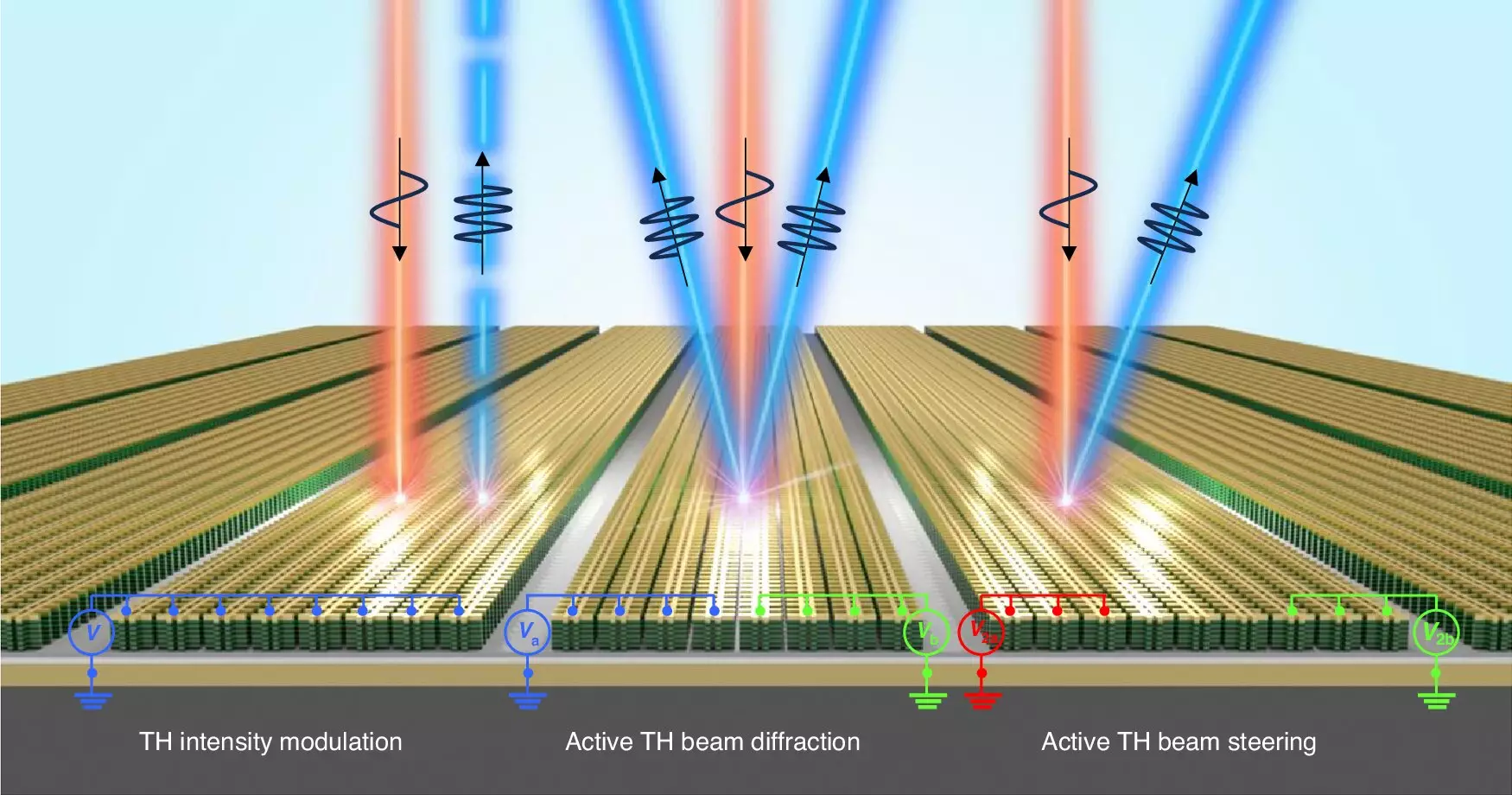Recent advancements in the field of nonlinear optics have resulted in the development of an innovative metasurface technology that operates at a scale smaller than the wavelength of light. This cutting-edge technology has significant implications for future communication systems, particularly in the realms of quantum light generation and medical diagnostics. The research, spearheaded by Professor Jongwon Lee and his team at UNIST’s Department of Electrical Engineering, has achieved remarkable feats in manipulating light through their creation of electrically tunable structures that promise enhanced capabilities in optical devices.
In a groundbreaking study published in “Light: Science & Applications,” the research team successfully demonstrated experimental implementations of electrically tunable third-harmonic generation (THG). They utilized an intersubband polaritonic metasurface integrated with multiple quantum wells, a methodology that sets a new precedent in the manipulation of light. The team reported an impressive modulation depth of 450% in the THG signal, coupled with an 86% suppression of zero-order THG diffraction, showcasing the potential for high-precision optical applications. This advances the ability to steer light beams through the use of phase gradients, contributing to the development of flat nonlinear optical components that can be actively adjusted.
Nonlinear optics is a field that examines the interaction of light with matter, allowing for the generation of multiple wavelengths from a single source. This is particularly valuable for enhancing data transmission rates compared to traditional single-wavelength lasers. A commonly known application of nonlinear optics is the green laser pointer, which operates on principles similar to those explored in this new metasurface technology. The compact design of these optical instruments, which could become as thin as a sheet of paper and utilize materials thinner than human hair, signifies a shift towards more portable and efficient laser devices.
Previous attempts in nonlinear optical technology faced limitations regarding electrical control and modulation. However, the latest metasurface designed by Professor Lee’s team overcomes these obstacles, allowing for unprecedented ease of operation. They have introduced a revolutionary concept that enables voltage control of second-harmonic generation (SHG) and independent modulation of THG’s intensity and phase. This capability positions the metasurface as a transformative tool in the light manipulation domain, expanding its applications in various high-tech fields.
The repercussions of this research extend into diverse fields, from cryptography to dynamic holography, and even advanced quantum communication systems. Professor Lee commented on the significance of their findings: “This advancement allows for unprecedented control of light.” The ability to manipulate both intensity and phase of nonlinear THG through electrical means not only paves the way for more sophisticated optical devices but also broadens the horizons for future technological innovations.
As the field of nonlinear optics continues to evolve, the transformative metasurface technology introduced by Professor Lee and his team stands out as a landmark achievement. The implications of their work may lead to breakthroughs in numerous applications, catalyzing a new era of advanced light manipulation technologies. With the promise of creating devices that are not only more compact but also more powerful, the future of optical engineering looks bright and full of potential.


Leave a Reply